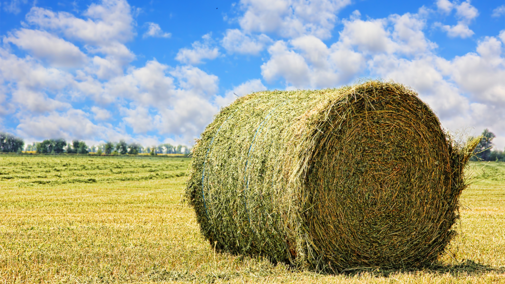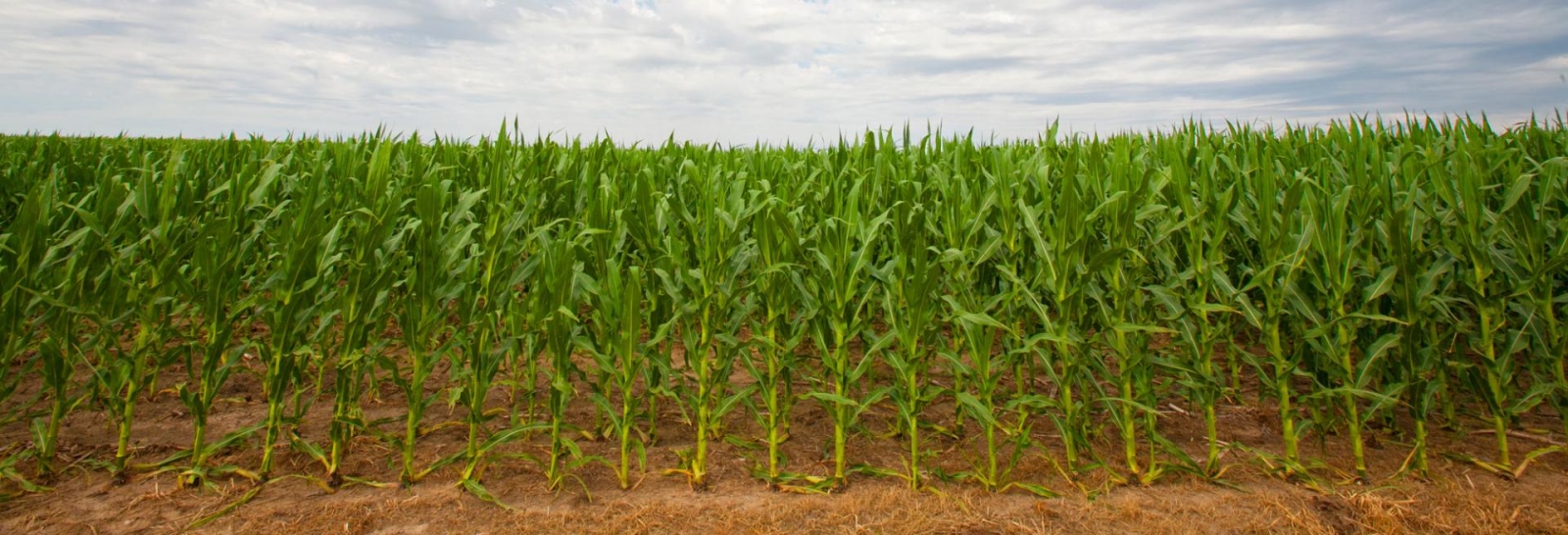Harvesting Summer Annual Forages
Putting up good quality hay from summer annual grasses like sorghum-sudan hybrids, pearl millet and forage sorghums can be tricky. Here are some tips to help make sure these hays are of good quality and dry, so they won’t heat or mold.
Nearly all problems making good summer annual grass or cane hay are caused by their stems. Stems are low in protein and energy, slow to dry, and the lower stems could contain potentially toxic nitrates.
There usually is a wide range of spring and early summer planting dates for these annuals, but cutting early before plants become excessively tall is important. When cut at about four feet in height, stems are smaller, eaten more readily, and the hay contains more protein and energy. Also, there is less plant volume. So, with smaller stems and fewer of them, the hay will dry quicker. Although you will have less tonnage when cutting early, you are creating more days for regrowth and a good second cutting.
Regardless of when you harvest though, cut it high, leaving eight to 10 inches of stubble. Tall stubble pays off three ways: it helps plants begin regrowth quicker; it holds hay off the ground so air can help dry underneath; and it keeps many nitrates out in the field stubble rather than harvesting them all in your hay.
And finally, always crimp the hay. Even when stems are small, the waxy coating on the stems cause slow drying. But if you break open these stems by crimping, water will be able to escape and evaporate more quickly.
So cut it early, cut it high, crimp the stems and they will dry.
Rental Rates for Nebraska in 2024
What does it cost to rent pasture this year? 2024 results are out for Nebraska cash rental rates.
According to this year’s survey, the average monthly rent being paid to graze a cow-calf pair this grazing season has increased between 5-8% compared to the previous grazing season. This increase does follow the overall trend of increasing land values, as well as cropland rental rates across the state.
The north reporting district — which is primarily the Sandhills — has the highest average cow-calf pair monthly rate at $73.95 per month. The northeast and central districts are not far behind at $70.10 and $68.05 per month, respectively. The northwest district — the Panhandle — had the lowest rates at just over $51.20 per month. Everywhere else in Nebraska, it’s around the $58 to $66 per month rate.
Pasture rent can vary for many reasons. Involvement of the landlord in fence, water and management responsibilities have a big impact. Similarly, quality of the grassland, location of the pasture and cow size can potentially affect rates. Tradition, individual relationships and local demand all also may influence individual pasture rental rates.
Whether you are looking for pasture or have pasture to rent, it is always important to have a written lease agreement. These agreements can have a number of different stipulations or clauses, but they all should define the number of cattle and length of time (or stocking rate) and how an event such as a drought will be handled.
Controlling Yucca on Rangeland
Yucca plants, also called small soapweed, can be quite common in western and central Nebraska rangelands. They are especially noticeable when flowering in June. In some areas, high plant density can significantly reduce grass production, so yucca may need managed to reclaim grazinglands.
Once established, yucca plants can increase on drier rangeland sites, since their deep taproot competes aggressively for the limited water in these soils. With sharp leaves protecting the plant, cattle rarely eat it during summer, and grass production decreases where yucca thrives.
General broadcast spraying to control yucca on rangeland is cost prohibitive, though small patches can and should be controlled before they expand. Herbicides like Remedy Ultra®, PastureGard HL®, Pathfinder II®, Tordon 22K®, Velpar, or Cimarron Plus® can control yucca, but only when individual plants are sprayed directly.
Hexazinone products like Velpar L®, Pronone Power Pellet, or Velossa® be applied to the soil uphill side of individual yucca plants with exact delivery hand-gun applicator, since pasture grass streaking injury downslope can occur with chemical movement. Herbicides are most effective when applied in spring or early summer. When using herbicides, be sure to follow label directions for the best control.
Winter grazing with cattle and bison can provide some yucca control success. During winter, yucca often is the only green plant prevalent, and cows actually will get down on their knees, lay their head sideways on the ground, and chew through the base of the plant to get to the moist, tender parts.
However, it can take some time for animals to learn to graze yucca, and some animals in the herd will not graze, while others can be quite proficient. After several consecutive winters of grazing, yucca stands can be reduced so grass again thrives during summer.
Whether it is with herbicides or trying some winter grazing, this might be a good year to reclaim some of your pasture back from yucca. More information is available at CropWatch or UNL Beef.

